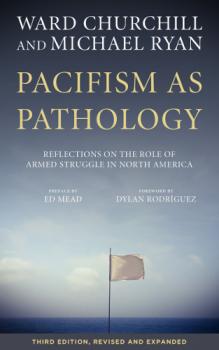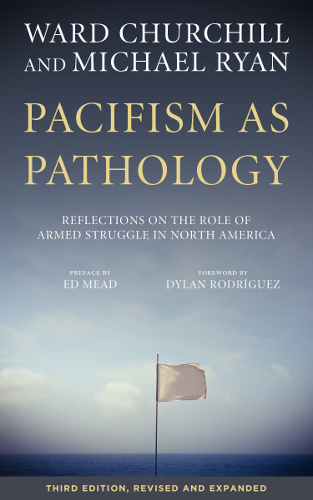 ‘When our enemies expect us to respond to provocation with violence, we must react calmly and peacefully; just as they anticipate our passivity, we must throw a grenade.’ This is pretty much the only ‘reflection on the role of armed struggle in North America’ that you will find in Ward Churchill’s 1986 essay, ‘Pacifism as Pathology’. These words, quoted approvingly, are from Black Nationalist activist Kwame Ture (formerly nonviolent civil rights Freedom Rider Stokely Carmichael).
‘When our enemies expect us to respond to provocation with violence, we must react calmly and peacefully; just as they anticipate our passivity, we must throw a grenade.’ This is pretty much the only ‘reflection on the role of armed struggle in North America’ that you will find in Ward Churchill’s 1986 essay, ‘Pacifism as Pathology’. These words, quoted approvingly, are from Black Nationalist activist Kwame Ture (formerly nonviolent civil rights Freedom Rider Stokely Carmichael).
Quite apart from any moral issues, this ‘grenade-ism’ is suicidal as strategic advice. It’s the opposite of what we find in the Russian Revolution or the Provisional IRA campaign or other effective armed struggles. (‘Effective’ is not the same as ‘justified’.) The thousands of Western activists who’ve been influenced by this essay have, sensibly, not taken Churchill’s/Ture’s words literally.
Most of ‘Pacifism as Pathology’ is taken up with attacking nonviolence – especially revolutionary nonviolence. Unfortunately, Churchill doesn’t seem to have ever read anything on revolutionary nonviolence. He doesn’t quote any of the key writers either in his 1986 original essay or in the long 2016 introduction in this new book.
Barbara Deming, in my view the most significant writer on revolutionary nonviolence, isn’t even named. AJ Muste, Dave Dellinger and George Lakey are named – but only in passing. All four published books well before 1986. (A footnote mentions the title of Dave Dellinger’s 1970 book, Revolutionary Non-Violence, but Churchill doesn’t tell us anything about it, good or bad. It doesn’t look like he’s read any of it.)
This 30th-anniversary third edition of Pacifism as Pathology contains, once again, a thoughtful preface by former bomber Ed Mead and a 30-page afterword by former nonviolent direct actionist Michael Ryan. What’s new in 2016 are: a short piece by Ryan; a long 37-page update/introduction by Churchill; and a jargon-heavy foreword by radical academic Dylan Rodríguez. Altogether, the book has bulked up by 50 percent.
There is a lot to be said about the 1986 essay, the 2016 update, and the other chapters. Readers of PN might find Pacifism as Pathology most useful as a series of sharp questions about how they define nonviolence, how they relate nonviolence to revolution (if at all), and how they relate to revolutionaries in their own countries who are committed to armed struggle.
Topics: Violence & nonviolence


